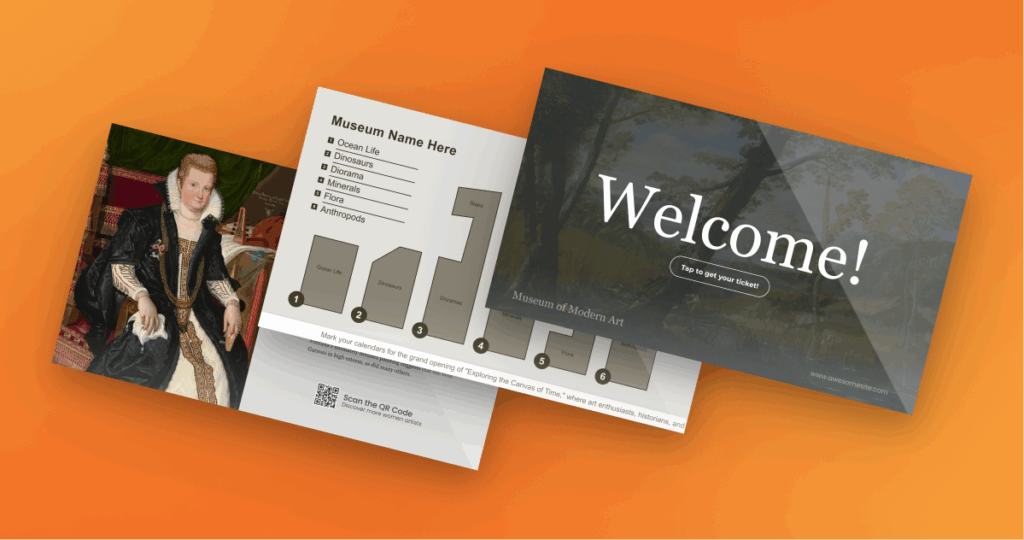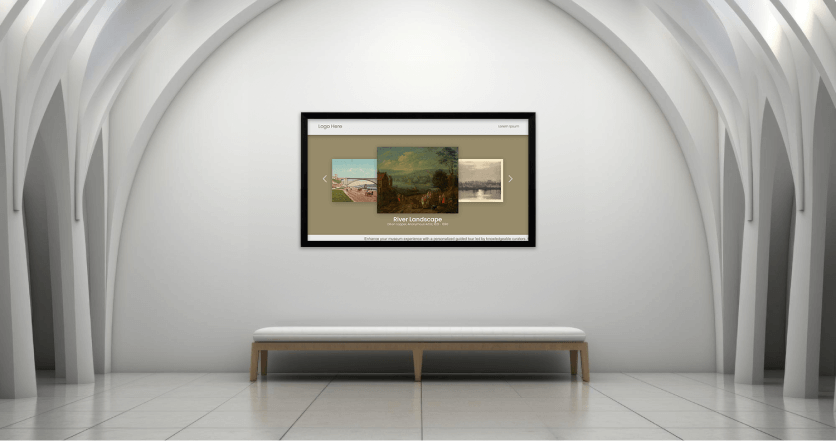Museums are places where history and culture come alive. As centers for education, observation, and preservation, museums play an integral role in nearly every society around the world. That’s why it’s so important that museums constantly seek out new and interesting ways to engage their audiences and stay relevant.
Today, museums around the world are modernizing their exhibits in bold and exciting ways. From interactive galleries and hands-on displays, to totally reimagined definitions of what it means to be a ‘museum’ in the first place, there’s no shortage of change and progress when it comes to this space.
In this article, we’ll review the key ways that museums are using screens to level-up their exhibits and transform their spaces.
Touchscreen displays and interactive kiosks
One of the easiest and fastest ways to upgrade static museum displays – including artifacts and art, for example – is to lend them an element of interactivity. Touchscreen displays and interactive kiosks located throughout a gallery can help visitors find information (such as background information, detailed descriptions, fun facts, relevant biographies, and more) about a certain collection or item, and can offer them a unique opportunity to explore exhibits more thoroughly and thoughtfully.
Projection mapping and augmented reality
This is one of the most exciting and innovative ways that museums are transforming how they present their collections. Projection mapping and augmented reality are technology which transform spaces, including walls, ceilings, or entire rooms, into dynamic and immersive displays. This technology is an incredible way of bringing exhibits and collections to life, and it’s completely changed the way that some museums are operating.
For example, there are now art museums (which are more properly categorised as “immersive art experiences”) where entire rooms are transformed into paintings. These museums are projecting huge pieces of art onto the walls, floor, and ceiling to completely immerse the viewer in the the pieces, but they’re not stopping there: they’re even imagining what the scene would have looked like in real life, and then projecting that onto the space alongside audio to create an in-painting experience. For example: a painting of a ship in a storm is transformed such that the viewer feels as though they are standing on the deck, and around them are rolling seas, crashing waves, and the sound of thunder and rain.

Wayfinding and crowd control
Of course, digital displays aren’t just about bringing art or artifacts or exhibits to life, they’re also about creating a more streamlined, less stressful experience for visitors. Using screens to display maps of exhibits and galleries is one key way that museums are leveraging digital signage to create a more pleasant visitor experience. These screens can also be used for real-time crowd and attendance monitoring: this helps visitors to know where any popular or less-crowded areas are, and enables staff to better control crowd flow.
Accessibility and inclusion
Art and artifacts must generally be seen or experienced up-close to be appreciated. And museums are often large places where exhibits are spread over several floors or even across multiple buildings. As a result, these spaces aren’t accessible to everyone. Digital displays can help to address this issue by sharing information about specific items in high-resolution, larger fonts, and in more convenient locations.
Modernize your museum with intelligent digital signage software
Modernizing a museum is a key to ensuring the ongoing relevancy and enjoyability of these important cultural and historical spaces. With the right digital displays, museums can elevate their exhibits and galleries – and create more inclusive spaces – without undermining the beauty or purpose of the items or information being displayed.
Yodeck is the first and only intelligent digital signage platform. It’s purpose-built to help organizations and teams more easily and effectively connect with their target audiences. Yodeck offers an industry-leading array of features and functionality that make it easy and fast to get the most from your investment in digital screens: from free apps and customisable templates, to remote content scheduling and management, Yodeck helps teams bring their spaces to life, so that they can engage their audience best.
To learn more about the features available with Yodeck, just visit this page.
And when you’re ready to try Yodeck for yourself, just sign up for free.
*Katie Rose Hester is a senior content strategist and writer working with product-led businesses bringing interesting, helpful innovations to market.
